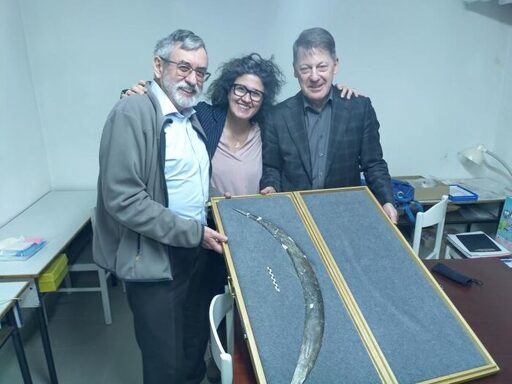A recent study published in PLOS One unveils groundbreaking findings that refine our understanding of the Early Upper Paleolithic period in Central Europe. Central to this research is the discovery of a “boomerang” artifact made from mammoth tusk at Obłazowa Cave in Poland, which is estimated to be approximately 40,000 years old. This remarkable object is among the oldest known of its kind in Europe and provides new insights into the technological capabilities and cultural expressions of early modern humans who inhabited the region during this transformative era.
The Early Upper Paleolithic, a period that marked profound shifts in human behavior, culture, and technology, has long been a focal point for archaeologists and paleoanthropologists aiming to reconstruct the emergence of modern human societies. The Obłazowa Cave site has yielded a rich assemblage of bone and lithic artifacts, enabling researchers to reassess the chronology and contextual significance of these materials with advanced dating techniques. It is within this framework that the mammoth tusk “boomerang” takes on special importance, symbolizing both a technological innovation and a form of symbolic behavior indicative of complex cognitive processes.
The artifact itself exhibits an expertly curved design, crafted from durable mammoth ivory, which suggests deliberate shaping and utilization. Such craftsmanship demonstrates an acute understanding of raw material properties and indicates sophisticated tool-making skills, previously difficult to attribute definitively to Paleolithic populations in this geographical area. The preservation state of the object allows for detailed morphometric analyses, which contribute to the ongoing debate about early human mobility and cultural exchange across Europe during this dynamic period.
Paper:
Boomerang and bones: Refining the chronology of the Early Upper Paleolithic at Obłazowa Cave, Poland
https://journals.plos.org/plosone/article?id=10.1371%2Fjournal.pone.0324911


